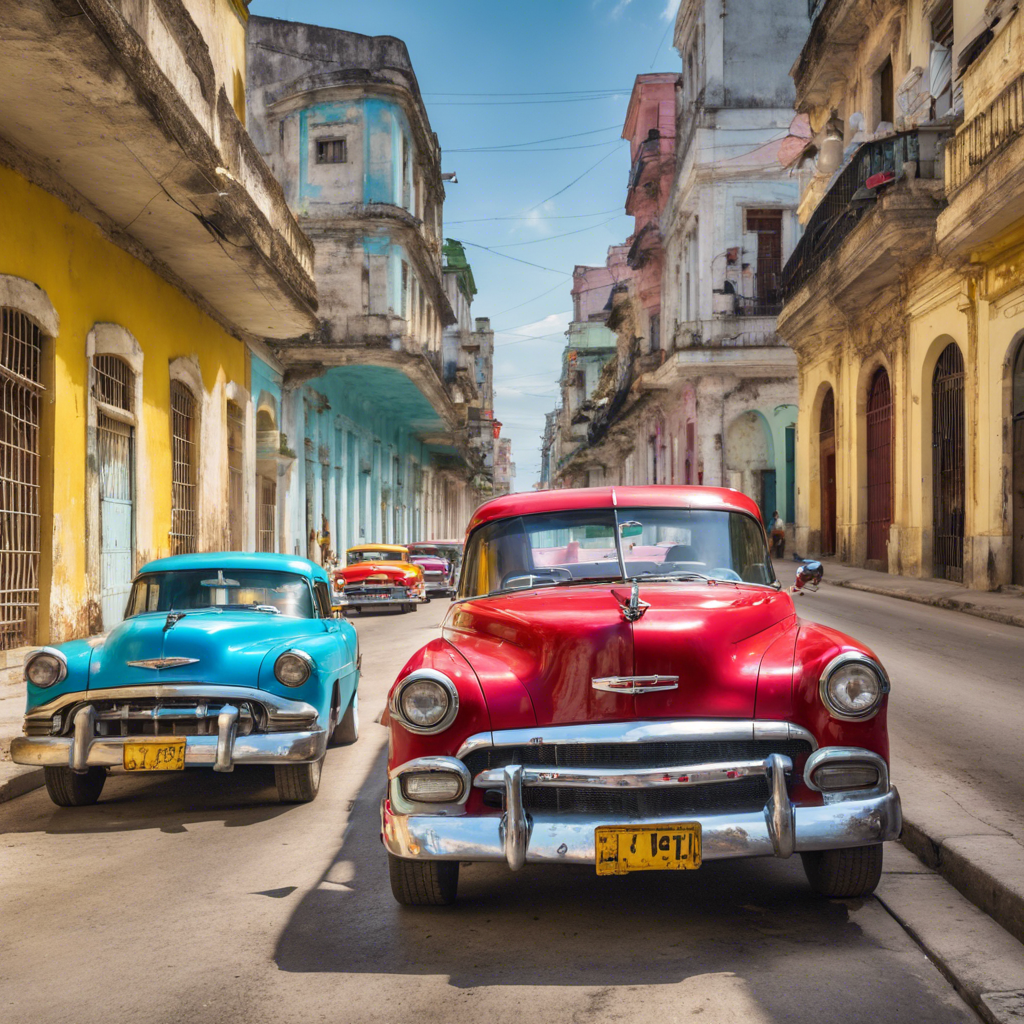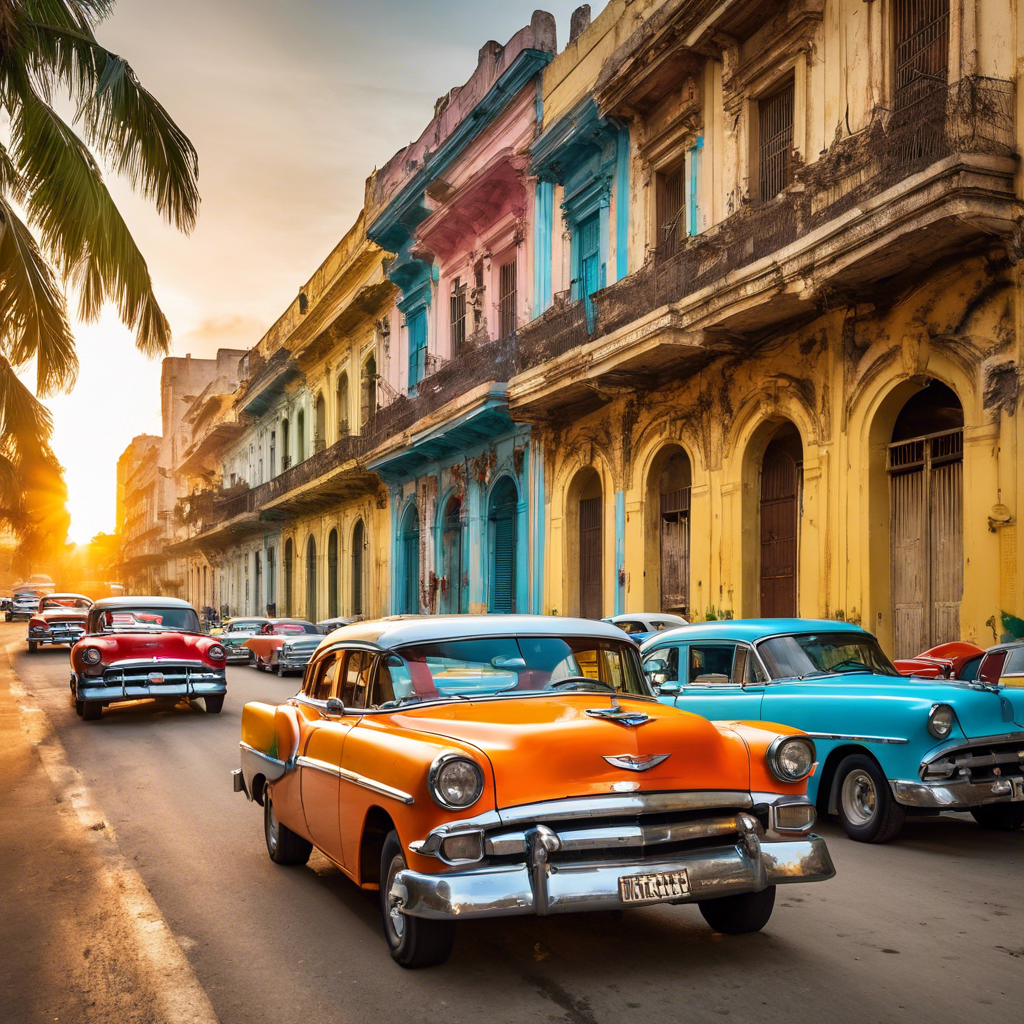The Enduring Charm of Cuban Cars: A Journey Through Time and Culture
October 16, 2024

Cuba, an island nation steeped in history and rich in culture, possesses a unique automotive landscape that is unlike any other in the world. The charm of Cuban cars is often embedded in their vintage appeal, showcasing a poignant narrative of innovation, resilience, and cultural identity amidst the backdrop of political and economic turmoil. As one explores the streets of Havana and beyond, it becomes evident that these vehicles are more than mere transportation; they are living artifacts that tell the story of a nation.

A Brief Historical Context
To understand the significance of Cuban cars, it’s essential to look back at the historical context that has shaped the island’s automotive landscape. The pre-revolution era, particularly between the 1940s and early 1950s, saw a flourishing of American car manufacturers in Cuba. Brands such as Chevrolet, Ford, and Plymouth dominated the market, and the roads were lined with shiny new models that symbolized wealth and progress. In this period, the allure of the automobile was not just functional; it was emblematic of modernity and American influence.
However, the Cuban Revolution in 1959 was a pivotal moment that fundamentally altered the course of the automotive industry on the island. Following the revolution, the new government implemented a series of nationalizations that extended to American car manufacturers. With the imposition of strict trade embargoes by the United States beginning in the early 1960s, the flow of new cars and parts into Cuba came to a screeching halt. The availability of vehicles dwindled, prompting a nationwide need for innovation and adaptation.
The Vintage Car Phenomenon
Today, the Cuban streets are often referred to as open-air museums, showcasing an array of classic American automobiles dating back to the 1950s. These cars—often brightly painted and lovingly maintained—have become symbols of Cuban identity and pride. The iconic imagery of a pastel-colored 1957 Chevrolet gliding past colonial buildings is not only a testament to the durability of these vehicles but also a reflection of the Cuban spirit. Car owners take immense pride in their vehicles, investing time, effort, and creativity into maintenance and restoration, often using makeshift repairs and locally sourced materials.
Despite the significant challenges presented by the embargo, where access to high-quality car parts is limited, Cubans have demonstrated remarkable ingenuity. Mechanics on the island are celebrated for their ability to improvise and fabricate solutions, allowing these vintage cars to stay roadworthy. The use of parts from other vehicles, including Soviet-era models like the Lada or Moskvitch, showcases the blending of influences that has characterized the Cuban automotive scene. This distinctively Cuban fusion of utilitarianism and artistry adds to the mystique and charm of these cars.
Cultural Significance and Tourism
Cuban cars serve as a gateway for exploring the broader cultural identity of the nation. These vehicles are not just relics; they are intricately woven into the fabric of daily life, representing a palpable connection to the past. Tourists flock to Cuba to experience the nostalgic allure of riding in a vintage car, often opting for classic car tours that traverse the vibrant streets of Havana, Varadero, and other destinations. The rhythmic clatter of a 1955 Buick or a 1958 Cadillac evokes an era of glamour, nostalgia, and romance, capturing the hearts of both locals and visitors.
Furthermore, the role of these automobiles extends beyond tourism. They are essential for everyday transportation, connecting communities, and facilitating trade in an economy where resources are scarce. The vibrant colors and unique aesthetics of these cars add character to the urban landscape, transforming ordinary streets into lively showcases of history.
The Future of Cuban Cars
As Cuba evolves, so too does its automotive landscape. Recent changes in government policy, evolving economic conditions, and increased foreign tourism have begun to impact the car culture on the island. The gradual loosening of restrictions has introduced new opportunities for importing vehicles and parts, leading to a potential shift in the traditional car culture that has defined Cuba for decades.
Electric vehicles (EVs) and sustainable transportation are also beginning to gain traction, reflecting a global movement toward environmental consciousness. While vintage cars will always hold a special place in the hearts of Cubans, there is an emerging dialogue about preserving the past while embracing the future.
Conclusion
Cuban cars, emblematic of a bygone era, are not just modes of transportation; they are vibrant symbols of resilience, resourcefulness, and cultural identity. They embody a unique story of adaptation amidst adversity, showcasing the tenacity of a people who have found ways to keep moving forward against the odds. Each car carries with it a piece of history and a narrative that transcends time, making them an integral part of Cuba’s cultural tapestry.
As the island continues to navigate its unique path, the enduring charm of Cuban cars will remain a central thread in the story of a resilient nation, capturing the imagination of future generations while paying homage to the rich history of those that came before. Whether through the roar of an engine or the gleam of freshly polished chrome, the legacy of Cuban cars endures—an ever-present reminder of the beauty of resilience and the ongoing journey of a vibrant nation.